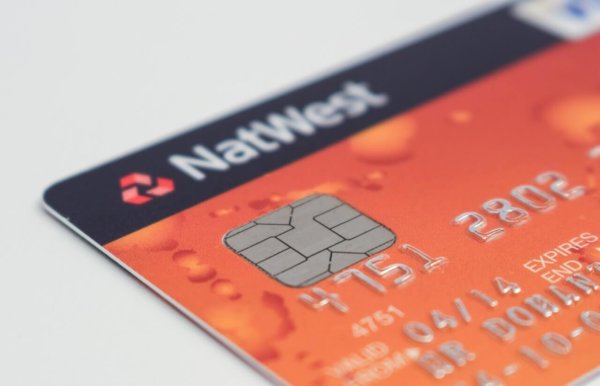How To Calculate Opportunity Cost
How much would you pay for something today if you knew you could get it at half price tomorrow? This is called opportunity cost. Opportunity cost is the difference between the value of two things or actions. For example, if you had $100 to spend on a pair of shoes, then you would only consider buying them if they were priced at $50. If you bought them for $100, you would be paying too much.
Opportunity cost refers to the amount of money you give up by choosing one thing over another. The concept was developed by economist Alfred Marshall, who published his book Principles of Economics in 1890. He defined opportunity cost as the difference between the value you receive from an action and the value you give up by taking that action.
To calculate opportunity cost, simply subtract the value of the item from its current price. For instance, if you paid $100 for a pair of shoes, and you know you can get them for $50 tomorrow, then you should subtract $50 from $100 to determine the opportunity cost. In this case, the opportunity cost is $50.
In this article, we'll be discussing how to calculate opportunity cost as well as what the implications of an opportunity cost are with an example to demonstrate this.
Also read:Pay Off Credit Card Debt

The Formula Of Opportunity Cost
The formula for calculating opportunity cost in simple terms is the difference between the predicted returns of each option.
The formula is expressed as follows:
OC (Opportunity Cost) = FO – CO
in which
FO = Returns on best forgone option
CO = Return on chosen option
The above equation shows that the opportunity cost is equal to the return on the best alternative minus the return on the chosen option.
For example, you have a choice between Option A – invest in the stock market in an attempt to generate capital gain returns – or Option B to reinvest your money back into your business with the hope that new equipment will boost production efficiency and increase your profit margins.
Now assume that your expected ROI (return on investment) for Option A is 12% over a year, whereas your business predicts that the updated equipment will give you a 10% return over the same time period.
This would be expressed using the above equation as 12% – 10% with the difference being 2%. In this example, you'd be forgoing the opportunity to earn a higher return if you chose to invest your money back into your business.
Also read: What Is ACH Payment?
What Do We Use Opportunity Cost For?
Analysis of opportunity cost plays a vital role in working out businesses capital structure.
Any firm will incur expenses in issuing debt and equity capital to compensate shareholders and lenders for their risk of investment, but both also carry an opportunity cost.
It's important to understand that opportunity cost is not just used to work out whether a particular investment is worthwhile. It also helps us to decide whether to make certain investments.
If we're considering making an investment, we need to look at both the potential benefits of the investment and the costs involved in achieving those benefits.
We use opportunity cost when we're deciding whether to invest our own money in a particular project.
If we already have some money invested in a company, we might want to consider selling it off because there may be better opportunities elsewhere.
However, before we sell off any existing assets, we must first analyze the opportunity cost of doing so.
This means that we need to take into account the fact that we could be earning more by investing the money elsewhere.
To do this, we need to compare the return on the investment against the opportunity cost.
If the opportunity cost is less than the return on the investment, then it makes sense to keep the asset within the business.
On the other hand, if the opportunity cost is greater than the return on the asset, then it makes sense for the business to divest itself of the asset.
Also read: How you can Calculate Retained Earnings

Is There A Difference Between Sunk Cost And Opportunity Cost?
The short answer is, yes, there is a big difference between sunk cost and opportunity cost. Sunk Cost is money that has already been spent. Opportunity Cost is only the potential returns based on future investment, obviously this money hasn't been earned yet.
As an example, if you bought 1,000 shares of a company at $10 a share, this would represent a sunk cost of $10,000 (1,000 × 10).
This amount of money has been paid out and getting this money back would mean liquidating stock at or above the purchase price.
In this example, opportunity cost asks us where that investment of $10,000 could have been better spent.
Also read: What is Annual Income?
Risk And Opportunity Cost
Opportunity cost can help us to determine what risks are worth taking.
For instance, if you were looking to start up a new business, you might choose to go ahead with the venture even though the chances of success aren't high.
You could be risking a lot of money, but if the reward was great enough, you might still choose to proceed anyway.
When you're choosing which projects to pursue, you should always ask yourself: “Will I get the best possible return from this?”
When you're thinking about your portfolio as a whole, you should ask yourself: “What is my expected rate of return?”
It's important to remember that the question isn't really about how much money you'll earn over time, but rather what percentage of your total wealth will you earn.
It's also important to realize that the return you expect depends on two things: the riskiness of the investment and the volatility of the market.
Also read: Raise Your Credit Score

Conclusion
Opportunity cost is one of the most useful concepts in finance.
It helps us to understand why certain investments make sense and others don't. It's also helpful when we're trying to decide whether to diversify our portfolios or not.
We can use it to figure out how much we should invest in each project and how much we should allocate to different types of investments. Finally, it helps us to think about how risky an investment is.
Your check stubs can be used as part of tracking your finances, use them to your advantage.
Thank you for reading!
 Our customer support is available 24/7:
Our customer support is available 24/7:

